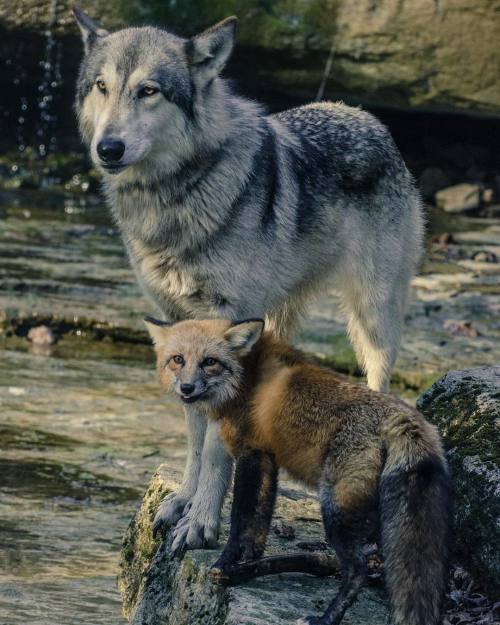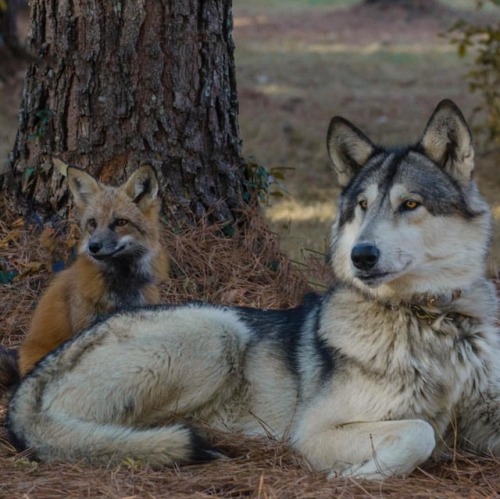Forestry - Blog Posts
hi i do a shitton of forestry work and lemme tell you!! wolves??? they are just Curious Bois who wanna Know What You’re Up To And When You’re Leaving. if they howl, howl back!! just move quietly and with confidence. they’ll circle you, but unless you’re a kid, near pups, or visibly aggressive (ie growling) they aren’t gonna attack you!!!!!
foxes won’t even approach they’ll just Vibe and then run away :( but they’re real sweet i love them
anyway the point is dont be afraid of wolves or foxes or bears or any of that shit. they’re real sweet
also u dont know true thrill until it’s pitch black and u cant see yr hand in front of yr face and yr circled by wolves and you hear em howl and u just tilt yr head back and take a couple deep breaths and howl back and get in a competition and afterwards you Know they respect u bc u respect them!!!!! good bois




Wild good boys

Tetsuka, of The Resistance
week 16 "the rivira, decades ago, brought an end to the elemental war, but things have been far from peaceful in the region.. the magic of fire was banned across the realm, the fendites and all fire aligned were forced to submit before rivira rule, in hopes of bringing peace to the region.. but many rebel groups rise up, resisting this control. those who resist the reign, or practice fire magic in secret, often being sent to camps for rehabilitation, and labor. tetsuka was one of many, who refused to give up the fire of her ancestors. she worked in these camps for years, made to break her spirit.. but she trained, and practiced her magic in secret, and after many seasons of planning, she escaped.. she now lives on the land, wanted across the region.. she helps other fire aligned escape, and has become something of a legend, among the rebels.. though the bounty offered for her recapture only grows" -the historian, 582sd hi hi! heres week 16! ouh.. this one took longer than id hoped.. 6 hours, surprisingly only 66 unique colors, 800x1000. id drawn this girl in my sketches, and she inspired me.. wanted to give her a full piece! well, anyways.. thank you for checking out my work! i hope you have a wonderful week c: ♡


Huey C-FHQB doing forestry at Chatfield Reservoir, Denver Colorado
taken 2/26/25


Quaking Aspen - Populus tremuloides
Today I want to bring up a charismatic favorite: the Quaking Aspen. Like all populus species, it's a fast growing, clonal colony forming, northern extreme and mountain loving tree (just like its Eurasian sister species: A. tremula) with an incredibly wide range of distribution. In addition to all those interesting qualities, the oldest known organism is presumed to be a Quaking Aspen colony (Pando, in Utah)
General identification before I can talk about the more interesting bits, Aspens are best known for their yellow autumn leaves and smooth white bark with dark knots, they can grow as large as 60' but depending on their environment can be stunted to around 5-20' (think of krummholz). Leaves of this species appear slightly heart shaped and retain the same sheen on both sides (image 1). Plants are unisexual meaning individuals either have male or female flowers, interestingly enough this is a good method to distinguish where one colony begins and ends by looking at the color of the branches in spring (see image from Colorado below, note trees with light green and those without). Emerging catkins are white at first which become green and longer as the season changes, male catkins having slightly longer stamen but female fruiting catkins ultimately growing longest at 10 cm. Seeds are small capsules with silky hairs to assist in wind dispersion, these trees are ruderal so they produce around 1.6 Million a season with many unable to germinate. Seedlings often need consistent moisture and full sun to even germinate, most of the seeds growth goes to root structure the first year.

The name Quaking Aspen (or trembling per the Latin) refers to the extremely mobile habit of the leaf. Leaves are connected to flexible petioles (stems) which flip around in the slightest breeze. Environmentally speaking, I was once told that leaves have chlorophyll on both sides however this stem could also be a biological strategy to cope with harsh wind conditions in mountainous environments, I didn't encounter any recent research verifying this though. Interestingly enough, given the harsh nature of which this tree thrives, apparently, there is chlorophyll in its trunk, allowing extra energy to enter the tree when it's leaves are gone.
Quaking Aspen is an early succession species, able to reestablish/colonize a site after a fire or other major disturbance. Many of Upstate New York's famous Aspen forests are actually a result of logging and fires in the early 1900s rather than a typical forest compostion. Establishment is different depending on opportunity, in the west its often long lived clonal roots systems, in the high arctic its often through wind blown seed, in the east its generally short lived clones out-competed by hardwood/conifer forest after a century, and in its furthest southeastern range I typically only encounter individuals on rocky outcrops or former fields.

Above ground trees usually live less than a century, in the east maybe 50-80 years given our moisture, out west individual trunks can live two centuries. It's common to find dense forests with even-age trees since clonal root structures re-emerge together (Image above from Bluebell Knoll Mountain in Utah). Its also thought that the root system can live for two millenia or longer, Pando being an example of extreme longevity (I mean 40,000 years would survive an ice age, even in Utah there would be mountain glaciation, thats quite spectacular if true). Ironically, one of the best survival tools in the Aspen's playback is fire recovery, otherwise it will get out-competed/shaded pretty fast (see the context in image 2, that NJ forest used to have lots of aspen).
All this in mind its good to point out that Aspen's early successional habit makes it great for ecological restoration. It's common to find them as the first pioneers on former mines or superfund sites (aspen grove below from Palmerton gap, Pennsylvania). Unfortunately one of the negative side affects is that populus species often bring up a lot of heavy metals in their leaves and wood meaning they can re-contaminate through their own biological accumulation. Which is good for extracting small scale contaiminants...very bad for large sites where you need to trap metal under soil to prevent toxins from eroding offsite

All this being said Quaking Aspen's large geographic range mirrors that of the last glacial maximum, implying a rapid spread onto retreating glaciers. This also suggests a growth habit requiring wet or moist soil conditions. This range is North West to Alaska nearly touching the Arctic Ocean at its Northern-most range in the Yukon, then east to Newfoundland; south west to Mexico (usually restricted to high mountains) and east from Iowa to New Jersey (with scattered populations in West Virginia).
Since Aspen often colonizes sites of former glaciation, with climate change it's predicted there will be a northward and uphill progression of populations. Aspen isn't really in intense danger of dissappearing but studies have shown major stressors (draught, extreme heat, over-grazing) cause higher mass-mortality events from minor stressors (typically disease and insect herbivorey). Given the fact that many forests are clonal there was a question of low genetic diversity amoung populations, yet interestingly, individuals undergo somatic mutations (DNA alterations after conception) and are extremely variable, so different individuals often place different energies into different defense tactics.
In addition to all of this information Aspens are primarily used today to make paper pulp. Historically settlers used aspen to derive quinine (think gin and tonic), and indigenous tribes have a history of using big trunks to create dug out canoes.
So please go out to your nearest mountain/boreal forest to enjoy the Quaking Aspen's lovely smooth bark and haunting shaking in the wind!